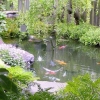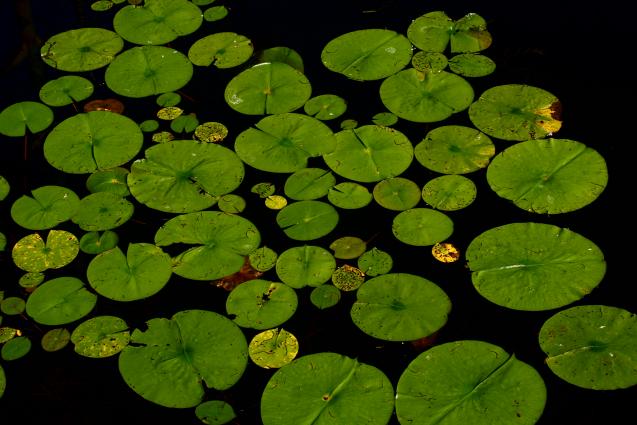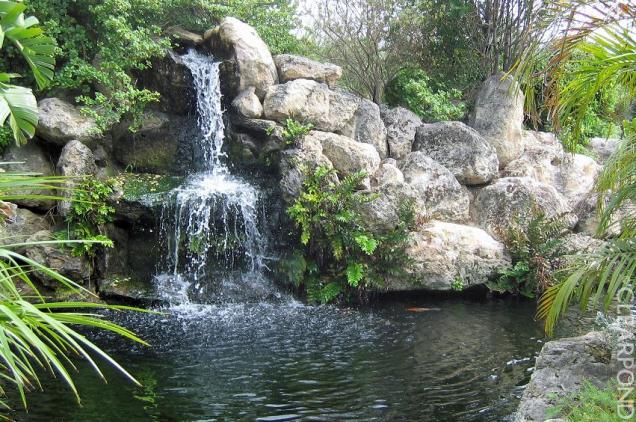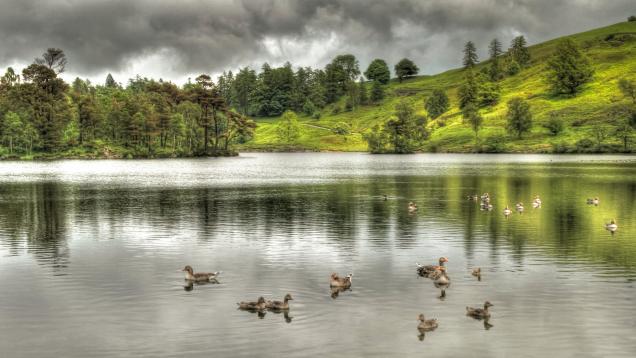
Stop Pond Algae With These Innovative Products
By Clearpond|July 01, 2015
There’s no need to be green with envy if your neighbour boasts about having an algae-free pond because actually, there’s no such thing.
Algae occurs naturally and a healthy pond that is free of chemicals will always have some degree of algae. However, a pond with excess algae isn’t desirable and your ultimate goal should be managing its growth, not trying to eliminate it. But is this easier said than done?
The important thing with managing the algae situation in your pond is to first know what factors are contributing to its growth. Once you understand the chemistry of your pond, then you can take corrective action.
Just like any other living organism, algae needs nutrients such as nitrogen, phosphorus and potassium to keep it alive - and the more nutrients it has, the faster it will grow. Other factors that contribute to the growth of algae are sunlight, heat and oxygen - and the trick to minimising the presence of algae in pond water is to find a balance between all of these elements.
That can take quite a lot of work, but luckily there are also numerous pond supplies on the market that can make the life of a pond-owner that much easier. However, make sure you know what type of algae (for example string, planktonic or nitella algae) is growing in your pond before you choose an algaecide because some products work better on certain types of algae than others.
Historically, copper sulphate and other derivatives of copper have been used as effective algaecides, but advances in the biochemical industry has led to the development of many other innovative pond supplies that can be safely used in a variety of aquatic environments.
Pond dyes
Aquatic dyes come in a variety of colours and are commonly used in lakes and ponds to slow down the growth of weeds and algae. They work by limiting the amount of sunlight penetrating the water - and although they won’t stop the growth of weeds or algae completely, they can be extremely effective in reducing levels if they are used correctly and consistently.
Pond blocks
These dissolving drop-in blocks are most effective when used as a preventative measure, or at the first sight of algae growth or after a pond has been cleaned up from an algae-infestation. They are a slow-release algaecide and can be a very easy and simple way of keeping algae growth under control.
Flocculants
Flocculants such as OASE Pond Clear binds super fine particles such as clay in suspension, soil and fish waste so that they can be easily removed with a pond net. These fast-acting products improve water quality and are effective against fine, non-filterable pollutants such as phosphate and heavy metal combinations.
Phosphate binders
Pond supplies such as Oase PhosLess works by binding excess phosphates and binding hydrogen sulphides that can cause unpleasant smells. Simply apply the product directly onto the surface of the pond, where it will act quickly and easily to remove phosphates which are the key nutrients for the growth of algae.
Oxygen release products
If you have string algae in your pond, you should consider a product such as Oase AlGo Direct. This product works without the addition of organic biocides or copper sulphate, and will quickly and reliably kill string algae in a short time by releasing active oxygen. The product was specially developed to work on contact with algae for selective and fast control - but should always be used as directed.
Other algaecides
There are a variety of algaecides available which kill free-floating algae, but it’s important to choose products that are appropriate for your aquatic environment. For example, a product such as Clearpond Pond clean will control green water algae in freshwater ponds and is safe for use even if there are fish and aquatic plants.
Remember, if you have a pond, you will have algae - but it doesn’t have to mean that your pond has to be pea-green and soupy. The best advice is to understand how your pond’s ecosystem works, and then work out which pond supplies will best meet your needs. Importantly, as with any chemical additive, it’s vital to check with the pond supplies professionals to make sure the product you have chosen is safe to use in your pond environment.
Still have questions? Talk to , leaders in aquatic environments in Australia and New Zealand on freephone 1800 222 010 for professional advice - or visit their website for a comprehensive range of innovative pond supplies, including Oase products, that will help you get the best out of your water feature.
Algae occurs naturally and a healthy pond that is free of chemicals will always have some degree of algae. However, a pond with excess algae isn’t desirable and your ultimate goal should be managing its growth, not trying to eliminate it. But is this easier said than done?
The important thing with managing the algae situation in your pond is to first know what factors are contributing to its growth. Once you understand the chemistry of your pond, then you can take corrective action.
Just like any other living organism, algae needs nutrients such as nitrogen, phosphorus and potassium to keep it alive - and the more nutrients it has, the faster it will grow. Other factors that contribute to the growth of algae are sunlight, heat and oxygen - and the trick to minimising the presence of algae in pond water is to find a balance between all of these elements.
That can take quite a lot of work, but luckily there are also numerous pond supplies on the market that can make the life of a pond-owner that much easier. However, make sure you know what type of algae (for example string, planktonic or nitella algae) is growing in your pond before you choose an algaecide because some products work better on certain types of algae than others.
Historically, copper sulphate and other derivatives of copper have been used as effective algaecides, but advances in the biochemical industry has led to the development of many other innovative pond supplies that can be safely used in a variety of aquatic environments.
Pond dyes
Aquatic dyes come in a variety of colours and are commonly used in lakes and ponds to slow down the growth of weeds and algae. They work by limiting the amount of sunlight penetrating the water - and although they won’t stop the growth of weeds or algae completely, they can be extremely effective in reducing levels if they are used correctly and consistently.
Pond blocks
These dissolving drop-in blocks are most effective when used as a preventative measure, or at the first sight of algae growth or after a pond has been cleaned up from an algae-infestation. They are a slow-release algaecide and can be a very easy and simple way of keeping algae growth under control.
Flocculants
Flocculants such as OASE Pond Clear binds super fine particles such as clay in suspension, soil and fish waste so that they can be easily removed with a pond net. These fast-acting products improve water quality and are effective against fine, non-filterable pollutants such as phosphate and heavy metal combinations.
Phosphate binders
Pond supplies such as Oase PhosLess works by binding excess phosphates and binding hydrogen sulphides that can cause unpleasant smells. Simply apply the product directly onto the surface of the pond, where it will act quickly and easily to remove phosphates which are the key nutrients for the growth of algae.
Oxygen release products
If you have string algae in your pond, you should consider a product such as Oase AlGo Direct. This product works without the addition of organic biocides or copper sulphate, and will quickly and reliably kill string algae in a short time by releasing active oxygen. The product was specially developed to work on contact with algae for selective and fast control - but should always be used as directed.
Other algaecides
There are a variety of algaecides available which kill free-floating algae, but it’s important to choose products that are appropriate for your aquatic environment. For example, a product such as Clearpond Pond clean will control green water algae in freshwater ponds and is safe for use even if there are fish and aquatic plants.
Remember, if you have a pond, you will have algae - but it doesn’t have to mean that your pond has to be pea-green and soupy. The best advice is to understand how your pond’s ecosystem works, and then work out which pond supplies will best meet your needs. Importantly, as with any chemical additive, it’s vital to check with the pond supplies professionals to make sure the product you have chosen is safe to use in your pond environment.
Still have questions? Talk to , leaders in aquatic environments in Australia and New Zealand on freephone 1800 222 010 for professional advice - or visit their website for a comprehensive range of innovative pond supplies, including Oase products, that will help you get the best out of your water feature.



